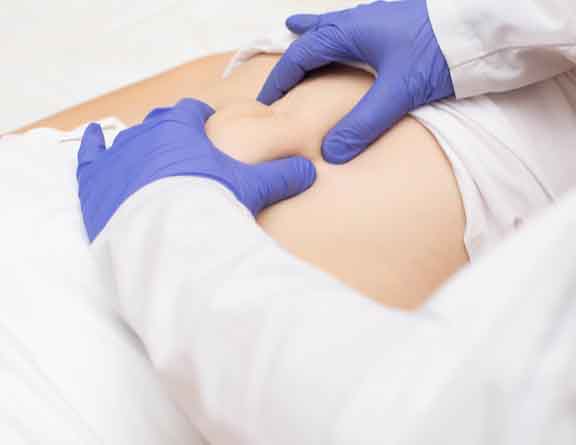Diagnosis
Usually, a hernia can be identified through a physical examination. The healthcare provider will ask you to stand, sit, and lie down to check the visible swelling around the herniated organ. If a hernia can be felt clearly in these positions, the doctor will recommend other tests for an accurate diagnosis-
- Ultrasound to get a clear image of the hernia and the muscles the internal organ is protruding.
- An X-ray may be used to determine if there are any obstructions in the hernia.
Other than these, an MRI scan or CT scan may also be used to identify whether or not the hernia can lead to complications and to narrow down the most suitable technique for surgical treatment.
Procedure
Surgery is the only effective way to treat a hernia. At Pristyn Care, we use both types of surgery- hernioplasty and herniorrhaphy. The hernia is repaired with or without the help of the hernia mesh. There are two different techniques used to carry out both types of hernia repair surgeries.
Open Hernia Repair Surgery
In open hernioplasty or herniorrhaphy, a large incision is used to access the internal organs. The surgeon then places the herniated organ into the original position. If necessary, a hernia mesh is placed over and below the hole in the muscle wall to prevent the organ from entering the abdominal cavity again. After the repair, the incision is closed with the help of stitches or staples and left to heal over time.
Laparoscopic Hernia Repair Surgery
It is a modern, minimally invasive technique used for hernia repair. The surgery involves making 2-3 keyhole-sized incisions in the abdominal area. All the surgical instruments and the laparoscope are inserted into the body through these incisions. The abdomen is then inflated with gas and ample space is created to carry out the procedure safely.
The hernia is repaired by pushing the organ back to its original location. If additional support or reinforcement is needed to keep the organ in its place, a hernia mesh will be placed over the hole. The mesh is stitched with healthy muscle tissue to prevent displacement of the mesh.
After the repair is done, the abdomen is deflated and the incisions are closed with stitches, staples, or surgical glue.
Both techniques are safe and effective in treating hernias. While open surgery usually requires hospitalization, laparoscopic hernia surgery is performed as an outpatient procedure. To learn more about the treatment procedures, you can schedule an appointment with our hernia doctors and discuss everything with them.








.svg)









